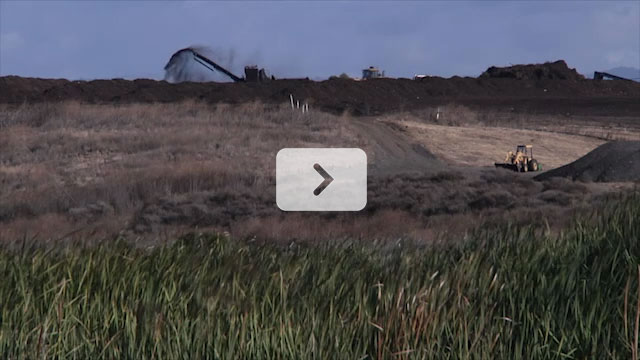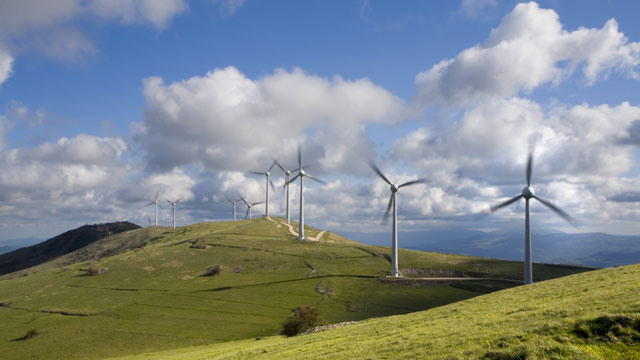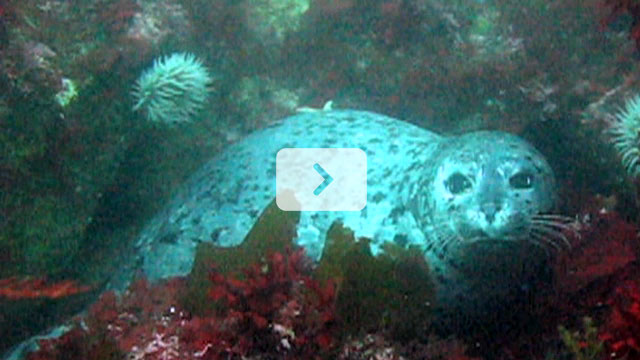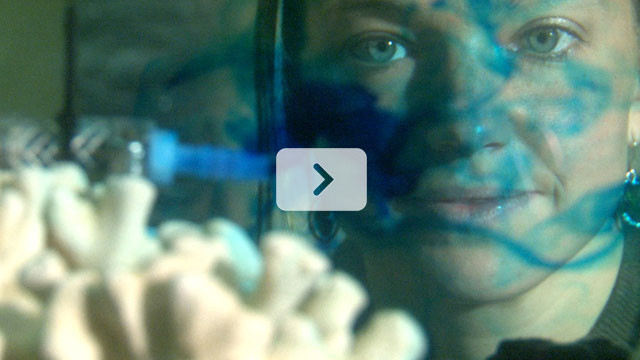 Preserving Natural CapitalNew software factors the value of natural systems into land-use decisions.
Preserving Natural CapitalNew software factors the value of natural systems into land-use decisions. “Faux Wood” May Reduce LandfillA synthetic wood substitute may one day save trees.
“Faux Wood” May Reduce LandfillA synthetic wood substitute may one day save trees. New Focus on EnergyMeeting surging demand for energy poses significant challenges to our planet and humankind.
New Focus on EnergyMeeting surging demand for energy poses significant challenges to our planet and humankind. Training Environmental LeadersE-IPER students cross academic disciplines to solve environmental problems.
Training Environmental LeadersE-IPER students cross academic disciplines to solve environmental problems. Empowering Students to Solve Problems
Empowering Students to Solve Problems
New fellowships empower students to pursue cutting-edge research. Large-Scale Power from Nanoscale Technology
Large-Scale Power from Nanoscale Technology
Stanford researchers develop batteries using copper nanoparticles.
ABOUT THE INITIATIVE
With natural resources stressed as never before by the demands of human activity, Stanford embraced the challenge of ensuring that people can live well on our planet now and in the centuries ahead.
Professors from three different fields joined together to lead the Initiative on the Environment and Sustainability: Jeffrey Koseff, the Campbell Professor of Civil and Environmental Engineering and Forman University Fellow in Undergraduate Education; Pamela Matson, the Chester Naramore Dean of the School of Earth Sciences and Goldman Professor of Environmental Studies; and Buzz Thompson, the Paradise Professor of Natural Resources Law.
From the outset, the initiative focused teaching and research on five areas: freshwater, land use and conservation, climate and energy, oceans and estuaries, and the sustainable built environment.
With a landmark gift from Ward, ’64, and Priscilla Woods in 2006, the university established the Stanford Woods Institute for the Environment. Professors Koseff and Thompson became the institute’s Perry L. McCarty Co-Directors. Housed in the new Jerry Yang and Akiko Yamazaki Environment and Energy Building, the Stanford Woods Institute now brings together students, faculty, and staff to join forces on environmental issues. The institute provides special funding for interdisciplinary research, convenes global leaders, and partners with other institutions, all in order to “create practical solutions for people and the planet.”
The far-reaching issue of energy rapidly attracted a critical mass of faculty and students and gave rise to its own organizations: A historic commitment from Jay Precourt, ’59, MS ’60, led to the creation in 2009 of the Precourt Institute for Energy, which includes the Precourt Energy Efficiency Center. The Precourt Institute supports a growing network of researchers whose goal is the rapid transformation of the world’s energy systems.
In the same year, in another milestone in environmental and energy philanthropy, Thomas Steyer, MBA ’83, and Kat Taylor, JD/MBA ’86, funded the launch of the TomKat Center for Sustainable Energy to advance technologies that make renewable energy economically competitive and environmentally friendly. In 2010, their further support enabled the law school and business school jointly to establish the Steyer-Taylor Center for Energy Policy and Finance to push clean energy technology to deployment through a focus on finance and regulation.
The environmental initiative’s focus on oceans also inspired a new enterprise: the Center for Ocean Solutions (COS), established at the Stanford Woods Institute for the Environment with a significant investment from the David and Lucile Packard Foundation, is a partnership among Stanford, the Monterey Bay Aquarium, and the Monterey Bay Aquarium Research Institute. COS takes the initiative’s hallmark approach of integrating cutting-edge science and technology with economic, social, and political expertise to identify practical approaches to sustainability.






